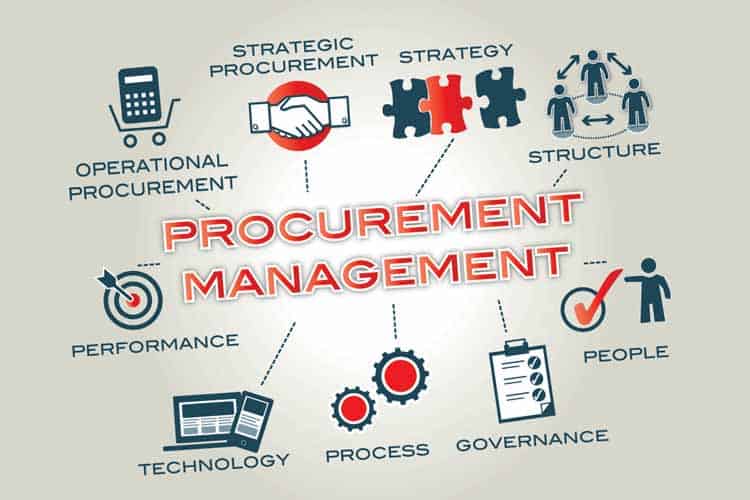-
10 Most Costly Procurement Mistakes and How to Avoid Them
Your company’s purchasing ability depends in large part on the effectiveness of your procurement system. When the system is working well, then purchasing goes pretty smoothly. But if you’re working with an inefficient system it’s going to lead to a whole host of common procurement and purchasing problems.
Thankfully, the most common procurement mistakes have fairly simple solutions. Many problems in the purchasing department can be solved with technology. Business process automation software is one of the easiest ways to transform the procurement department and fix common purchasing mistakes.
However, even when using purchase order software, there are still some tasks that need a human touch. And some of the costly mistakes that plague procurement departments are a result of human error or organizational shortcomings. It’s easy for purchasing managers to get into the habit of doing things a certain way and overlook areas where the purchasing department can improve.
Whatever the root cause for purchasing mistakes, leaving them unchecked can end up being very costly for your company. Here are ten of the most common – and costly – procurement mistakes you’re likely to encounter, along with steps you can take to avoid and correct them.

1. Not Negotiating
Most of the time, you assume that the price you see is set in stone. And you’re often right. But with suppliers that you plan to maintain a long-standing relationship with, it can be worth it to ask if they’ll negotiate deals on repeat orders (perhaps in return for early payments, which you can manage with AP software).
It almost goes without saying that it’s important to be professional about your request. Just keep in mind that you don’t want to alienate your suppliers by pestering them. It’s one thing to negotiate for a deal that benefits both parties and another to obnoxiously try to bargain the price down every time you place an order.
2. Ignoring Your Suppliers
Suppliers are often a good resource for learning more about available products and finding the best deals. Be sure to maintain a good relationship with your suppliers and keep track of their current communications so you don’t miss out on something could benefit your company. You just might snag a good deal or be the first to try out their new products.
One way that automation can help with this is by giving you the option to set up a supplier self-service portal. This lets your suppliers log-in to your system to update their information, supply missing documents, and find answers to customer service questions. These features help improve communication between you and your suppliers.
3. Going Over Budget
Assuming your organization isn’t prone to reckless spending, going over budget is usually an issue with coordination and/or communication. No matter what the root cause is, this problem is something you can’t afford to ignore.
Combat this common procurement problem with regular budgetary updates. Be sure you’re communicating with all the links in your supply chain and getting everyone on the same page regarding spending limits. You can also use procurement software to implement better controls governing purchases.
4. Making Snap Decisions
Rushing your buying can lead to poor decision making. While timeliness is important, it pays to shop around for the best deal and double-check with others in your company (especially for large orders) to make sure you need the items being ordered and how large of an order to place.
Purchase order software can help with this problem by keeping track of old orders in an easy-to-search database. That makes it easy for you to how much of each product you used in the past so you can plan for the future. The system also automatically checks to make sure no one places any duplicate orders too close together.

5. Isolating Major Decisions
You want your procurement system to move things along smoothly. In pursuing that goal, it’s tempting to not bother with looping other departments in on purchasing decisions. But that can easily backfire and end up costing more time and money in the long run.
For major purchasing decisions that will affect other departments, it makes sense to get their input before placing the final order. Keeping lines of communication open goes a long way toward making purchasing decisions that benefit the whole company. This may require certain changes in organizational structure. You can support these changes by automating the departments involved using software designed to work together.
6. Being Too Rigid
In a fast-paced business world, inflexibility can take a serious toll on your procurement system. A procurement system that’s too lean and rigid means you won’t be able to respond quickly if one of your suppliers runs out of an item you need or if a different supplier offers you a better deal.
Of course, too much flexibility in your supply chain can also have its downsides. While an agile, flexible strategy is highly adaptable, it can also become hard to control and predict. You’ll need to find a balance between lean and agile procurement that works for your company.
7. Failing to Establish Internal Policy
While flexibility is important, you also need a clear policy in place to govern your procurement strategy. Without a clear policy, employees in purchasing have no guidelines for the best way to handle everyday purchasing tasks or how to deal with problems.
Establishing a company procurement policy helps keep things moving smoothly, standardizes purchasing practices, and prepares your employees to prevent or quickly deal with obstacles. And it’s easy to program your purchasing software to automatically enforce company policy. Just remember to review your standards regularly to keep them it up-to-date with your company’s current needs.
8. Not Sharing Your Vendor Policy
Most companies have an idea of what they expect from vendors and suppliers. But many don’t communicate those expectations to their vendors, much less ask vendors to agree to a compliance policy. Without such a policy, though, you’re at the mercy of your vendor’s customer service if there’s a price increase, cybersecurity breach, late delivery, or any other problem.
Click here to learn more about how to create an effective vendor compliance policy. Sharing this document lets suppliers know what they’re agreeing to when they do business with your company. It encourages clear communication and helps protect your company if legal issues arise in the procurement process.

9. Refusing Technology
In some cases, organizations are suspicious of using new technology to improve business processes. They may worry about the additional cost or have security concerns. But the truth is, procurement software saves time and money while also improving the entire purchasing process.
Companies using e-Procurement software drastically reduce their requisition order cycles, their requisition to order costs, and cut back on maverick spending. They also tend to improve their spend management. Procurement software is also secure and very user-friendly. In addition, the Software-as-a-Service model takes the burden for maintaining this technology off your IT department.
10. Not Using Technology Well
Reliable purchase order software eliminates many common procurement mistakes, but only if you’re using it effectively. This software is capable of generating purchase orders quickly and efficiently. It can also enforce company policy and best practices. It stores all purchasing information in an easily searchable format so you can keep track of funds and match purchase orders to incoming goods. But if the system isn’t set up right or it isn’t user-friendly then it’s not going to help.
That’s why it’s so important to partner with a reliable technology supplier. Here at NextProcess, we have one of the highest implementation rates in the industry. We will make sure that your company’s new software is set up correctly and that it’s fully customized for your needs before we consider the implementation complete. And our customer service team is always available if you have further questions or want to change something in the software.
If that sounds good, click here to get in touch with us. You can schedule a free demonstration and see for yourself how our purchasing software can help your company.